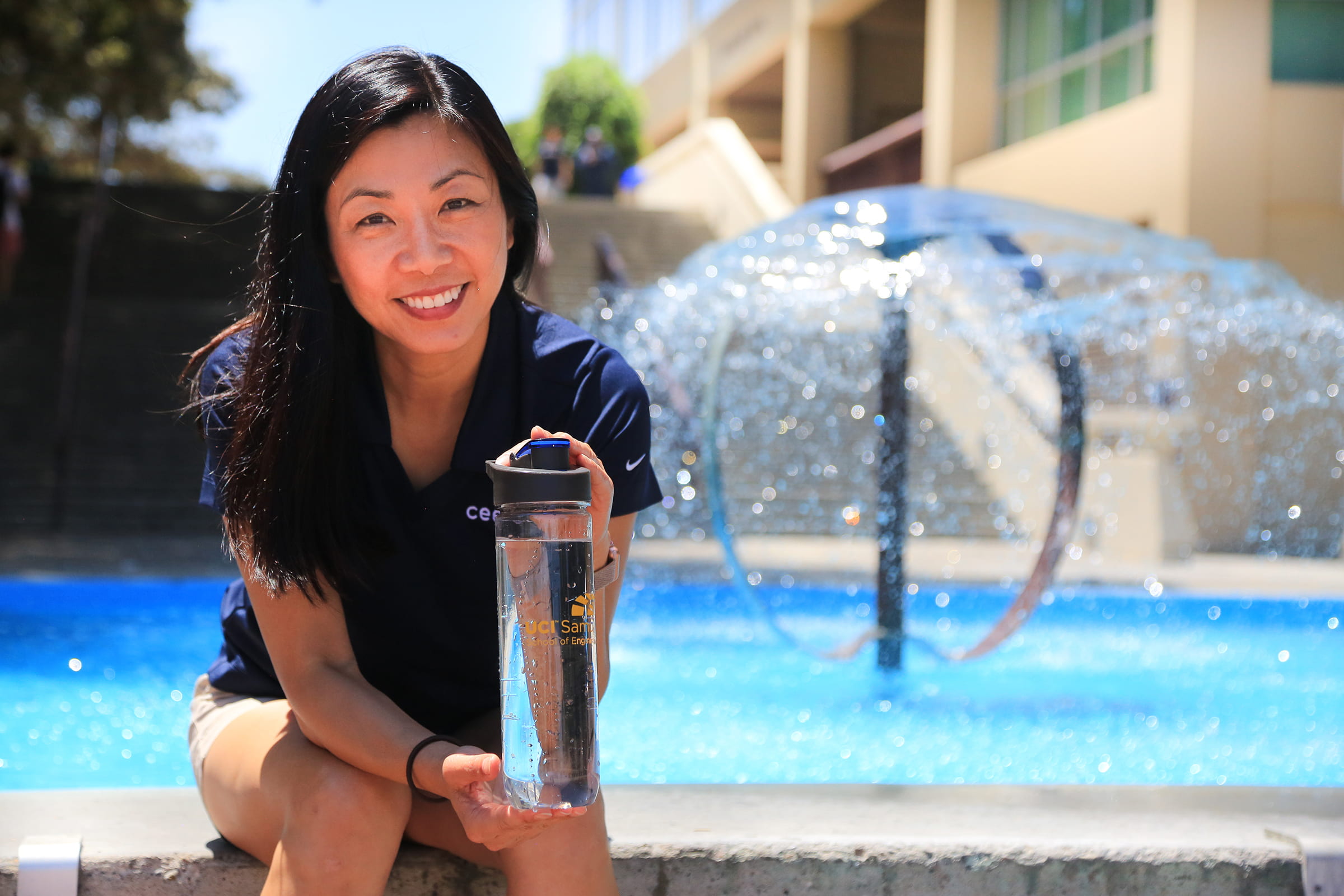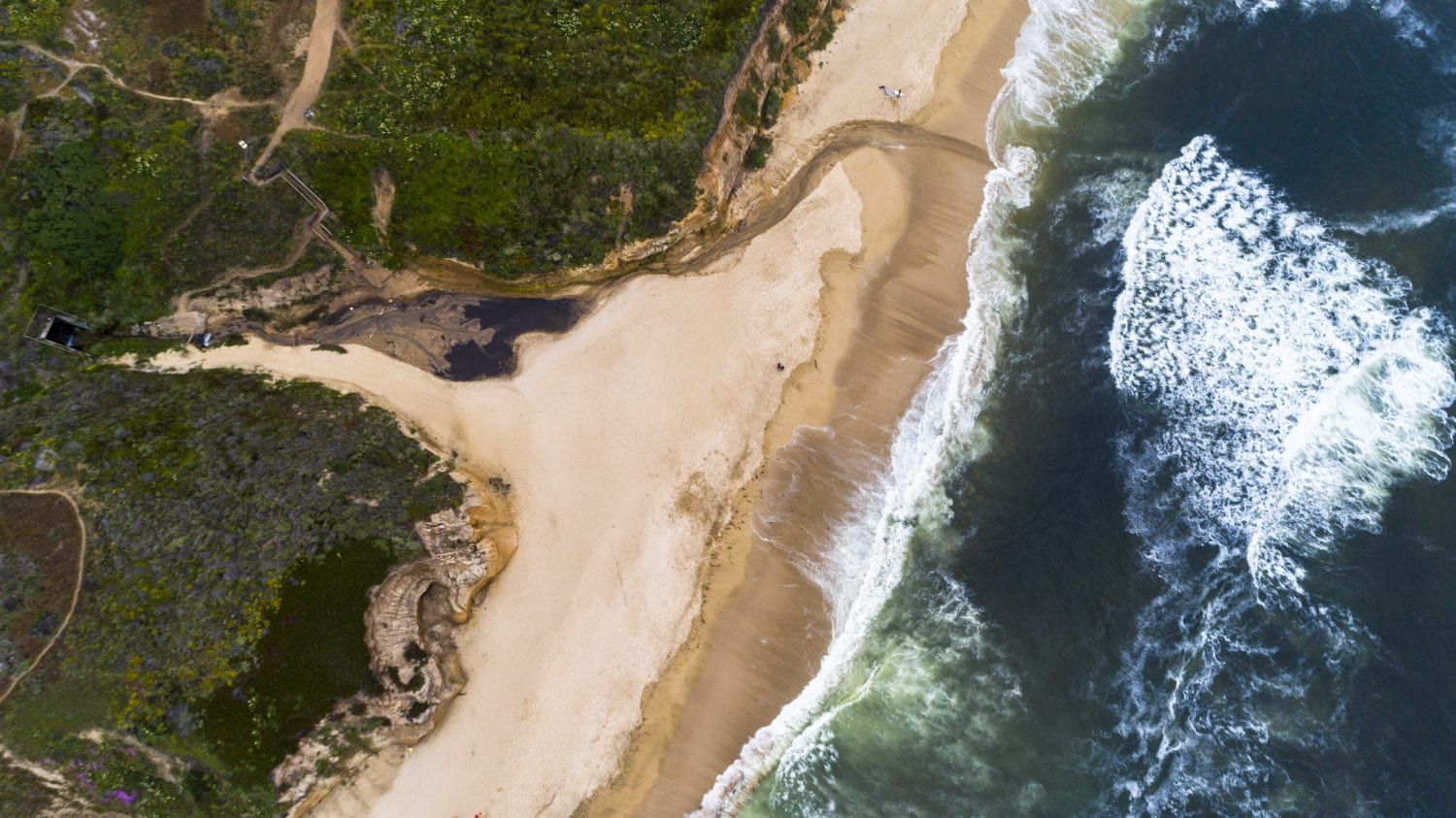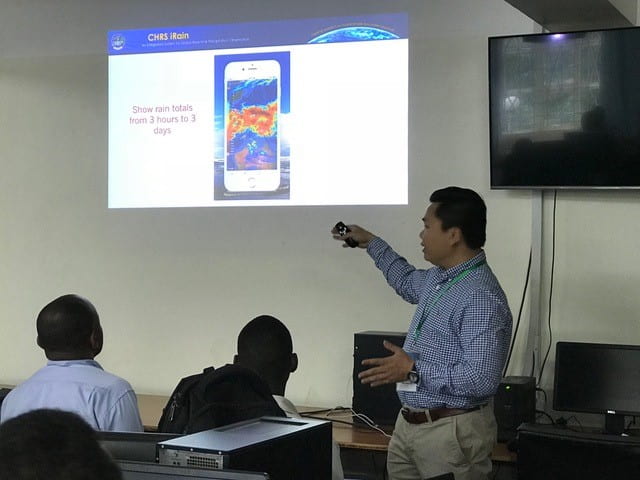Driven for desalinization
UCI researchers are part of a national mission to create affordable water treatment solutions

Fresh water shortages have made desalination a possible solution for supplementing the overall water supply. To address this issue, a team of industry professionals and researchers have formed National Alliance of Water and Innovation to jointly examine the critical technical barriers and research needed to lower the energy cost of desalination and other water processing methods. Among the scholars participating is a team from UCI – Sunny Jiang, professor and chair of civil and environmental engineering, Brian Tarroja, senior scientist in the campus’s Advanced Power & Energy Program; Shane Ardo, associate professor of chemistry; and Diego Rosso, professor of civil & environmental engineering and director of the UCI Water-Energy Nexus Center. Here, Jiang and Rosso discuss the dynamics of UCI’s partnership with NAWI, and the implications it will have on the future of desalinization.
Q: What is NAWI’s mission?
SJ: NAWI’s mission is to create affordable water treatment solutions and to make them energy efficient. NAWI will focus on the following research priorities, which, in short, are called A-PRIME: autonomous operation, precision separation, resilient treatment and transport, intensified brine management, modular membrane systems, and electrified treatment processes. They will look at seawater and alternative water sources such as oil, gas, industry produced wastewater power plant wastewater, and brackish ground water.
DR: NAWI’s vision, and UCI’s original vision within NAWI, is to combine the knowledge of scientists with that of industry professionals and open new ways of collaboration between the two. As a result, 19 university campuses partnered with 10 national labs to promote original and independent business and intellectual endeavors for studying water treatment.
Q: Are desalination plants possible in Southern California?
DR: Yes, they are possible. In fact, desalination plants were invented here. In Orange County, as early as the beginning of the 1970s, desalination was practiced at a large scale at the inaugural plant in Fountain Valley. That plant was rebuilt 10 years ago to accommodate innovations in water reclamation. These solutions included producing drinking water, producing industrial water for cooling towers and reclaiming water for irrigation.
SJ: Desalination has proven more than feasible, as desalination plants have been in operation in Southern California for years. There is a pilot plant in Carlsbad that works on desalinating seawater, and a surface well in Long Beach that prevents salt water from intruding into fresh ground water wells and basins as the groundwater is extracted from the ground. These are all locally supported projects.
Q: How does desalination work? And what happens to the left-over minerals?
DR: Desalination, as we practice it in Orange County, employs membranes that reject just about all salts from the influent water. This concentrated brine is usually disposed of in the ocean; however, processes exist to convert the brine into salts with commercial value, thereby commoditizing the disposal problem.
Q: How widespread are desalination plants around the world?
SJ: In Australia and in Israel, there are global operations collaborating with Orange County. In Perth, Australia, there are two large desalination plants. Israel has been engaged in desalination for more than 30 years. Global initiatives, especially in the Middle East, have become increasingly essential as resources like the Dead Sea begin to degrade.
DR: Desalination plants are more common in the coastal areas of regions that need alternatives for their water supply. Looking at the entire world they aren’t common at all, but they are often clustered in certain areas where water is scarce. When they were starting their plant in Ashkelon, Israelis travelled to the Fountain Valley plant in Orange County and learned the newest techniques from our engineers and plant managers. Saudi Arabia has also come to the Fountain Valley plant, and with the help of Orange County has begun desalination in Dammam, the capital city of their eastern province. I have been to the Singapore National Water and Public Utilities Board, and they were constantly praising Orange County’s innovations in desalination.
Q: What are the pros and cons of desalination?
SJ: The pros are that we have new sources of water to meet the demand. Cons are that there is a great cost in energy. The technology we have now is older. New technologies that are developing will consider the energy cost and try to limit it.
Q: What is UCI’s role in the partnership?
SJ: UCI will be involved in multiple interdisciplinary projects having to do with the overall mission of NAWI, including autonomous operation, electrified treatment processes, precision separation, and resilient treatment and transport. NAWI will issue a call for projects after the challenges and opportunities of each alternative water source are identified during the first year road mapping effort. UCI researchers will respond to the project needs. Research projects are to be started on the second year of the program.
Q: What are some examples of these potential research projects?
SJ: Several researchers from UCI have submitted ideas to NAWI. One project, submitted by me, discusses using a seawater membrane bioreactor to filter and remove carbon and nutrients using biological wastewater treatments. These treatments combine a sludge composed of active protozoa and bacteria with ultra and microfiltration processes in order to more efficiently and effectively clean water, which prevents the membrane – the device that filters contaminants from water during the desalination process – from becoming clogged and inefficient. An additional process, submitted by Shane Ardo, is for processes called thermal heat distillation, when light is applied to a black membrane, heating it and separating water from sodium ions, leaving salt separated from desalinated water.
DR: Many ideas are being discussed now, but no project is yet active. Amongst the potential projects are the fundamental and applied studies on pre- and post-treatment for the water that is targeted for desalination. Another project jointly submitted by myself and Brian Tarroja aims to tackle the limited variability of energies inside water by characterizing the responsiveness of various types of energy loads, in terms of how quickly and how much each can respond to renewable variability. A second project investigates the potential of desalinated water to be used as energy storage to mitigate the impact of water’s high energy requirement and fairly low and consistent energy profile. It also examines whether desalination facilities can operate more flexibly through innovative facility and process control management.
Q: What are some of your hopes for the future of NAWI?
SJ: We need energy efficient water supplies, so I hope we can revolutionize the water purification process to benefit both humans and the environment.
DR: My hope is to catalyze connections amongst researchers and engineers who traditionally have not collaborated.


